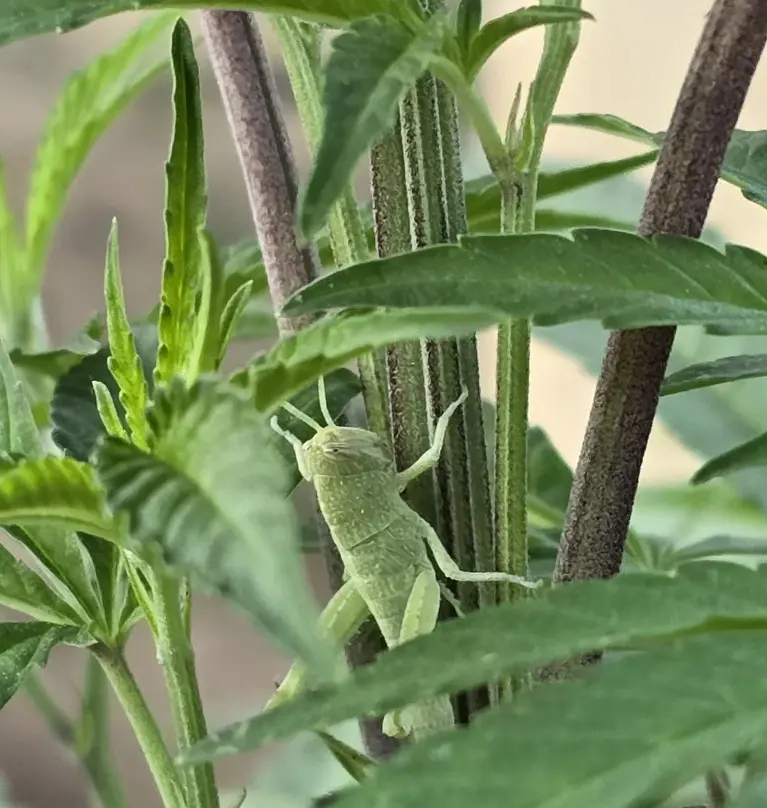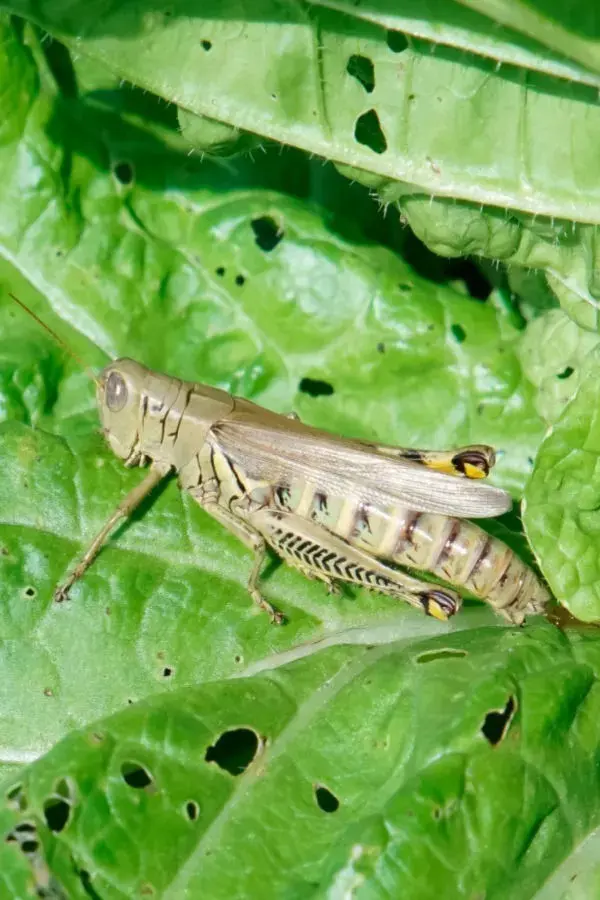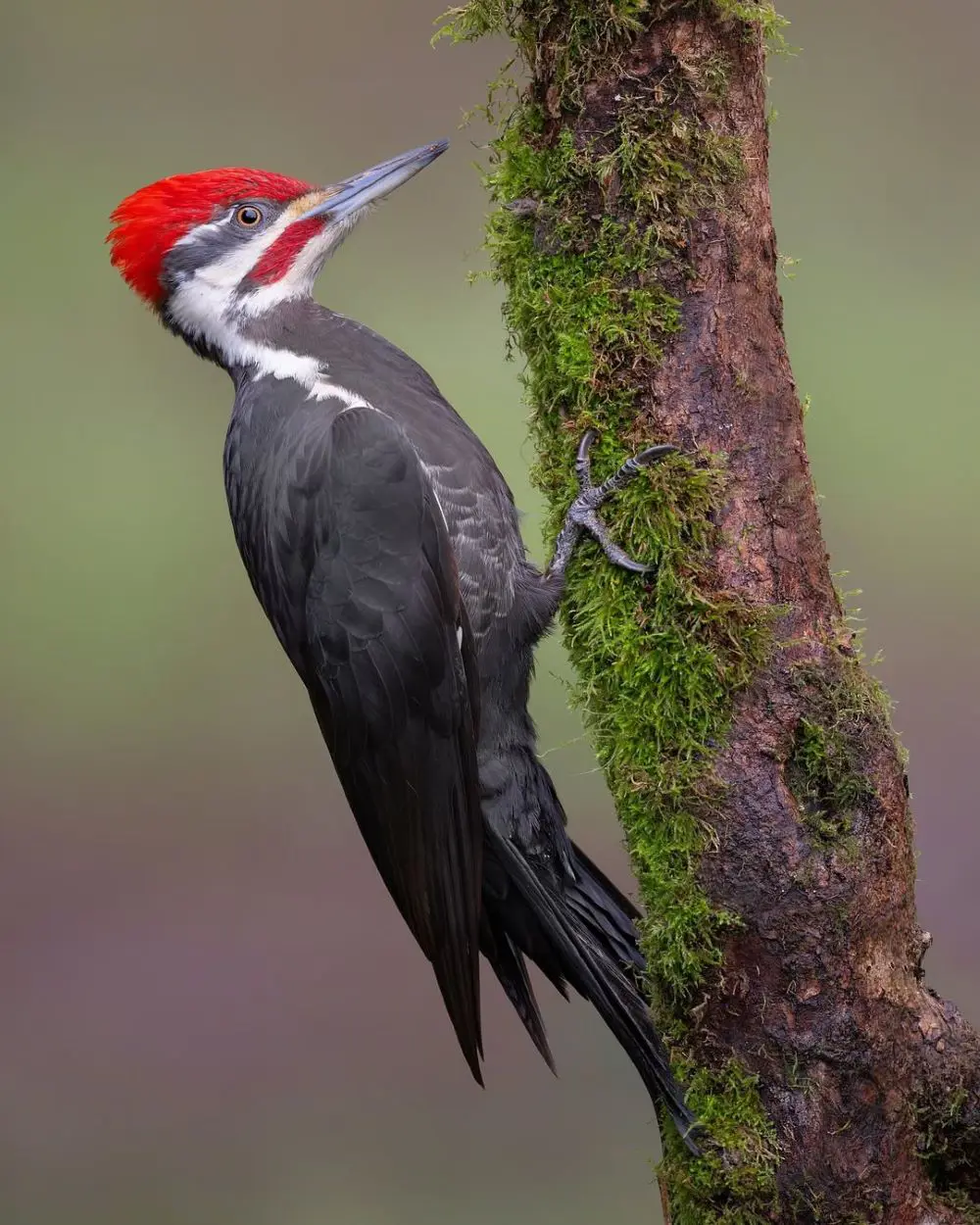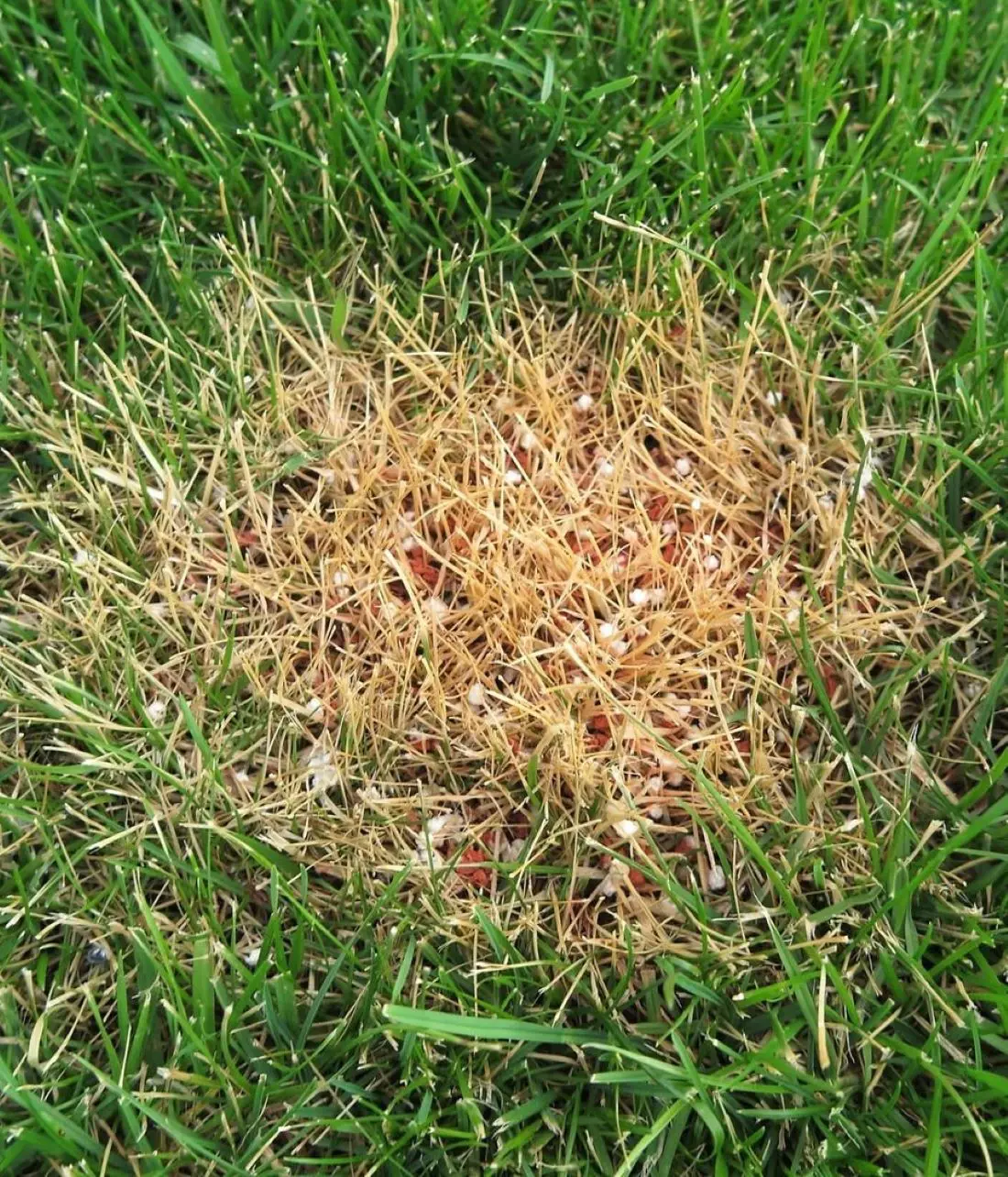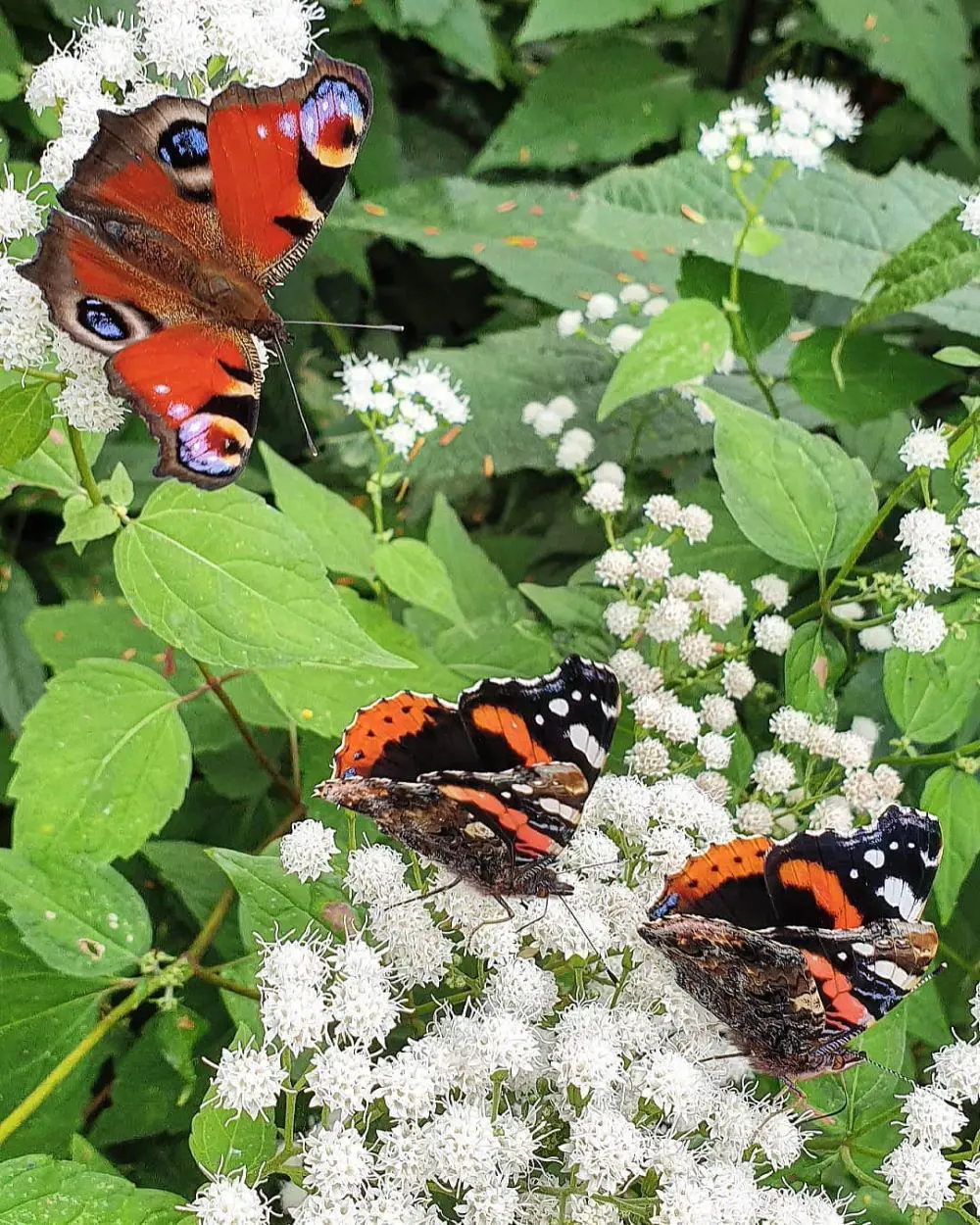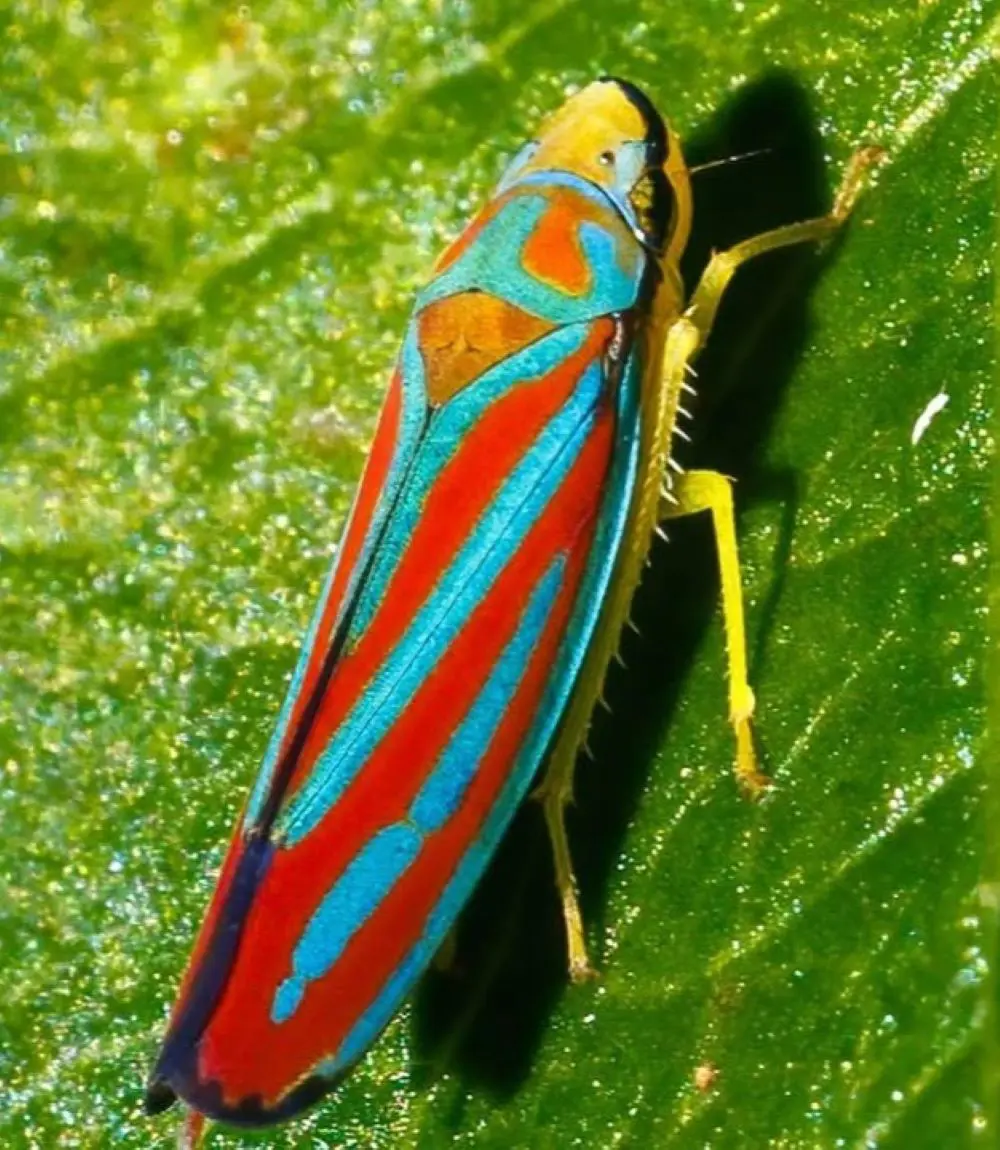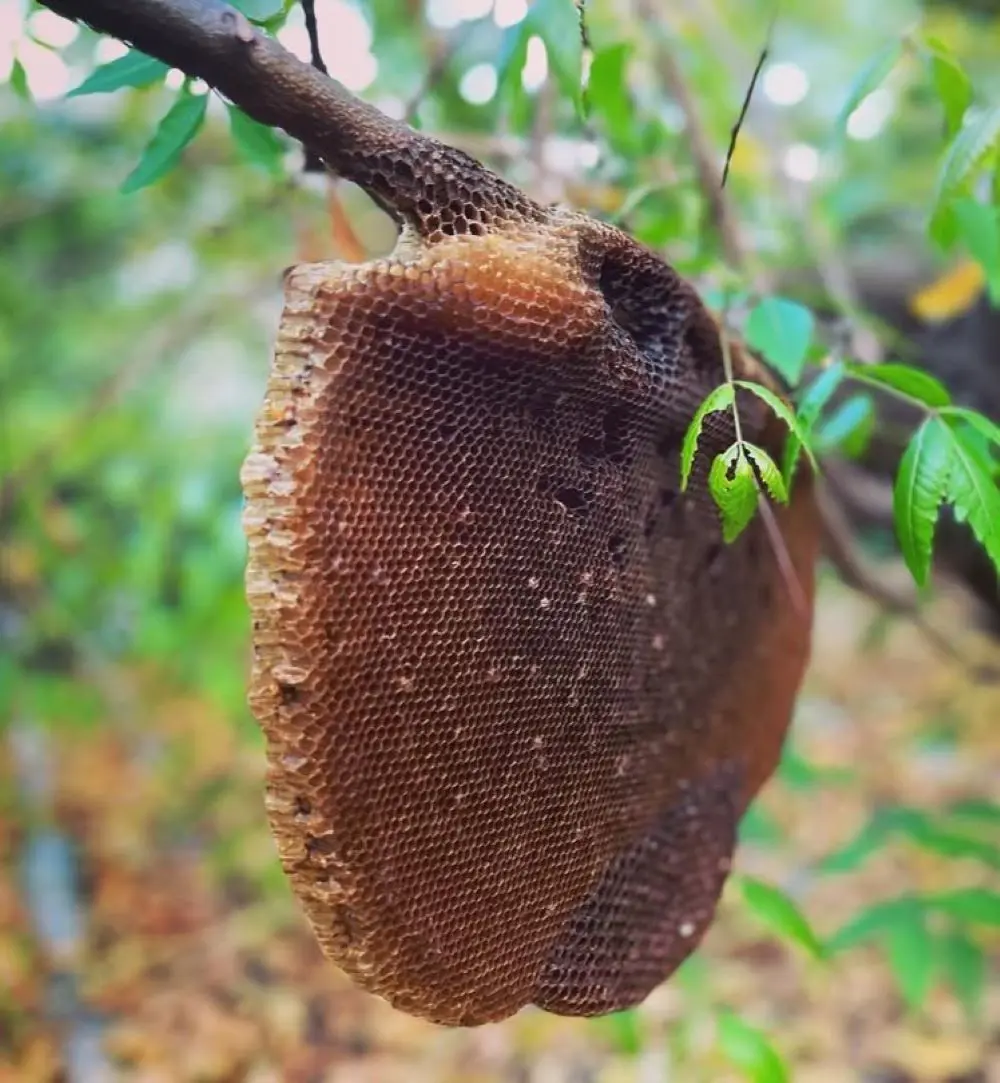How To Get Rid Of Grasshoppers in Yard Naturally
1. Handpicking
Handpicking is an effective method to control small infestations in your yard. Although it appears to be time-consuming, it’s a chemical-free and environmentally friendly approach.
Morning or late afternoon is the perfect time to handpick as they are highly active during this time. To begin, arm yourself with a container filled with soapy water, which will prevent grasshoppers from jumping away and eventually kill them. Once you spot an adult grasshopper or nymph, quickly grasp it with your fingers and transfer it to the soapy water container.
2. Attract Natural Predators
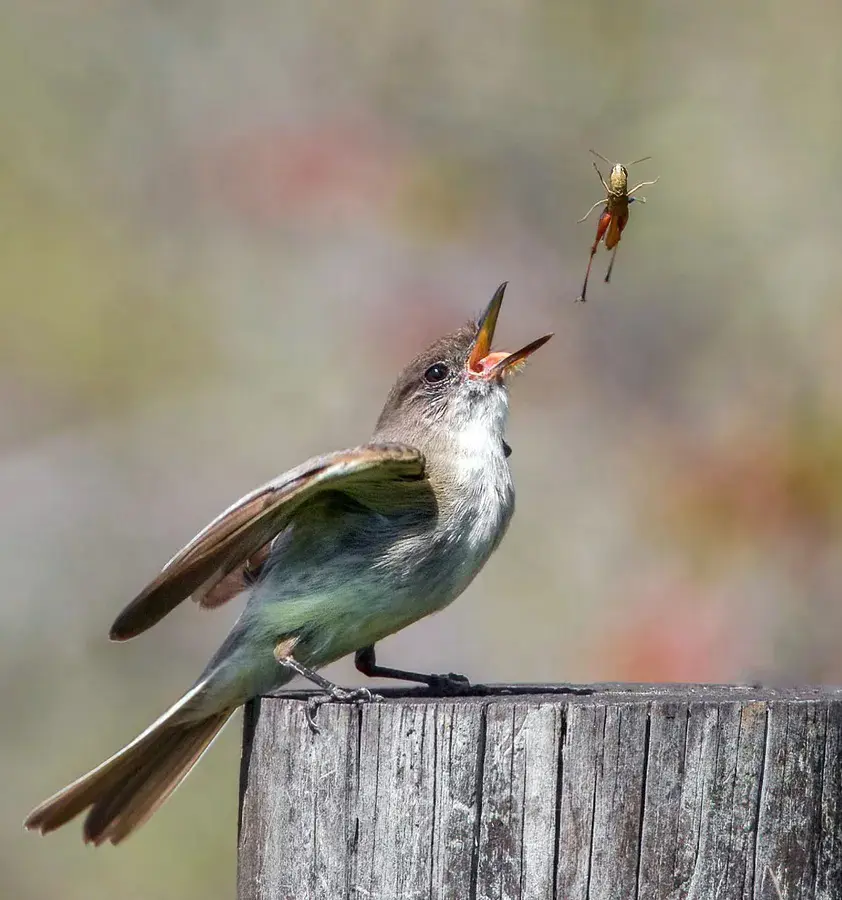
One of the most effective and environmentally friendly ways to control grasshopper populations is to help their natural predators to take up residence in your yard. Birds (sparrows, robins, and blue jays), spiders and praying mantises are some examples of such predators that relish a grasshopper meal.
You can attract birds by planting berry bushes or fruit trees, spiders by not using harmful pesticides and introducing praying mantis eggs by purchasing. These beneficial creatures can significantly reduce grasshopper numbers without resorting to harmful chemicals.
3. Remove Habitat
Mowing your lawn regularly means offering fewer hiding places and food sources to grasshoppers. Regular mowing can disrupt their habitat and discourage them from settling in your yard.
Another probable shelter and egg-laying site of grasshoppers is weeds. So, by keeping your yard clean and free of clutter, you can reduce their population.
4. Traps
Traps like glass and water, bottles and sticky traps are a few commonly used techniques to control the grasshopper population. In glass and water traps, a glass panel is vertically placed, when a grasshopper flies into it, it will fall into a container of soapy water placed below.
In the case of bottle traps, the top of the bottle is cut off and inserted into the bottle in an inverted position. Some grass or brait is placed inside the bottle, once grasshoppers enter it they won't be able to escape. Sticky traps can be purchased and placed near grasshopper hotspots.
5. Beneficial Plants/ Companion Planting
This natural way not only deters grasshoppers but also keeps other pests harmful to your yard away. Cilantro, calendula and dill are some examples of such plants.
Known for its strong, distinct aroma, cilantro can create a protective barrier against grasshoppers near your vulnerable plants. The vibrant flower calendula also possesses a strong scent that can help keep grasshoppers at bay. Moreover, dill has a pungent aroma that can deter grasshoppers.
6. Diatomaceous Earth (Food-Grade)

Diatomaceous earth (DE) is made from fossilized diatoms. This product is formulated by grinding these microscopic aquatic organisms into a fine powder. The microscopic blades present in it can pierce the exoskeletons of insects including grasshoppers.
This causes dehydration and eventually leads to their death. To use DE (food-grade as they are not toxic to pets and humans) for grasshopper control, apply a thin, even layer around the base of plants, along walkways, and in other areas where grasshoppers are active.
7. Physical Barrier
Using physical barriers like row covers and mesh netting is a reliable method to protect vulnerable plants from grasshopper damage. You can use row covers to drape over plants to create a protective shield. They are more effective for smaller gardens or smaller plants.
For larger areas or taller plants, mesh netting can be used to create a protective enclosure. These covers or netting however should to be removed when plants require pollination or when harvesting.
8. Plant Diversity
Grasshoppers prefer monocultures, a yard setting where single plant species dominate. By introducing a diverse plant ecosystem in your yard, you disrupt their preferred habitat.
You can incorporate a mix of herbs, flowers, vegetables, and shrubs. Some plants have natural repellant properties that can deter grasshoppers and some can attract beneficial insects that prey on grasshoppers. Strong-scented herbs like rosemary, mint, and oregano are some plants effective to deter grasshoppers.
